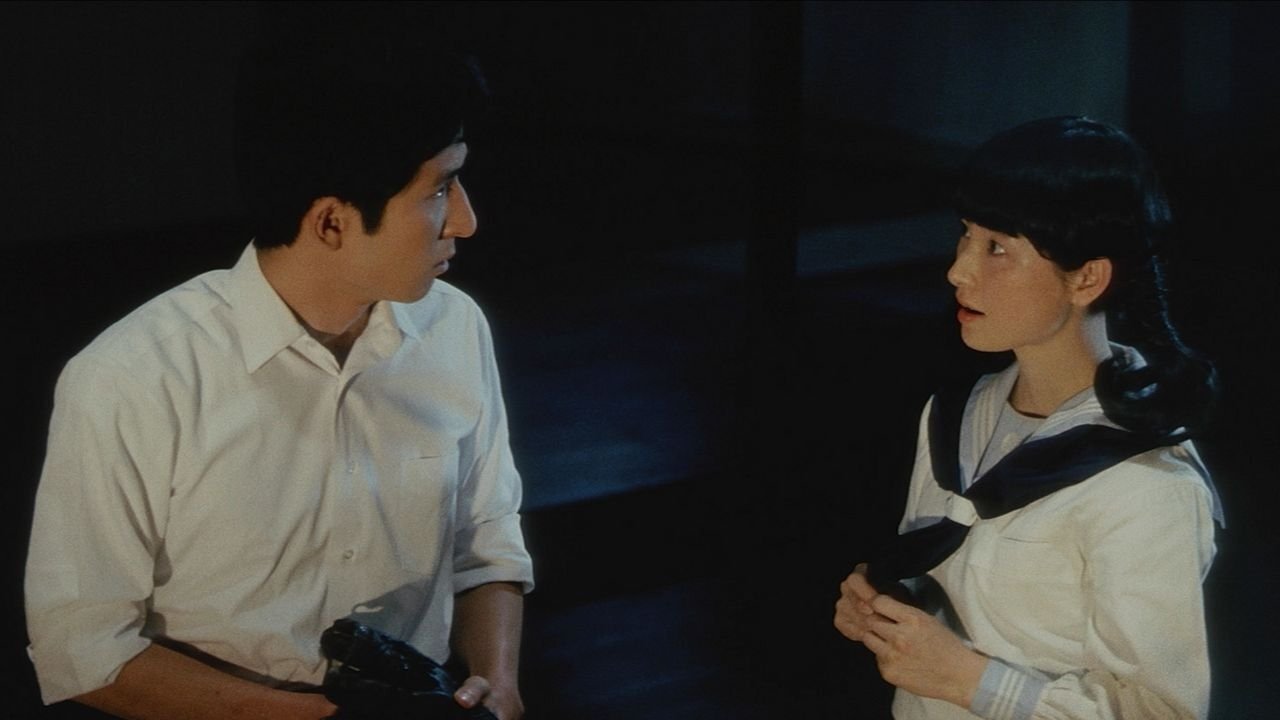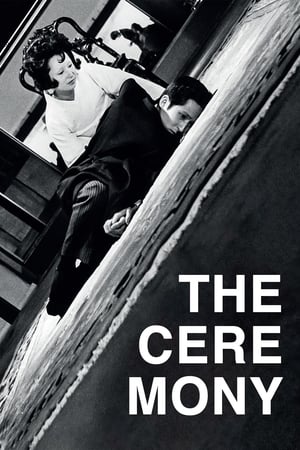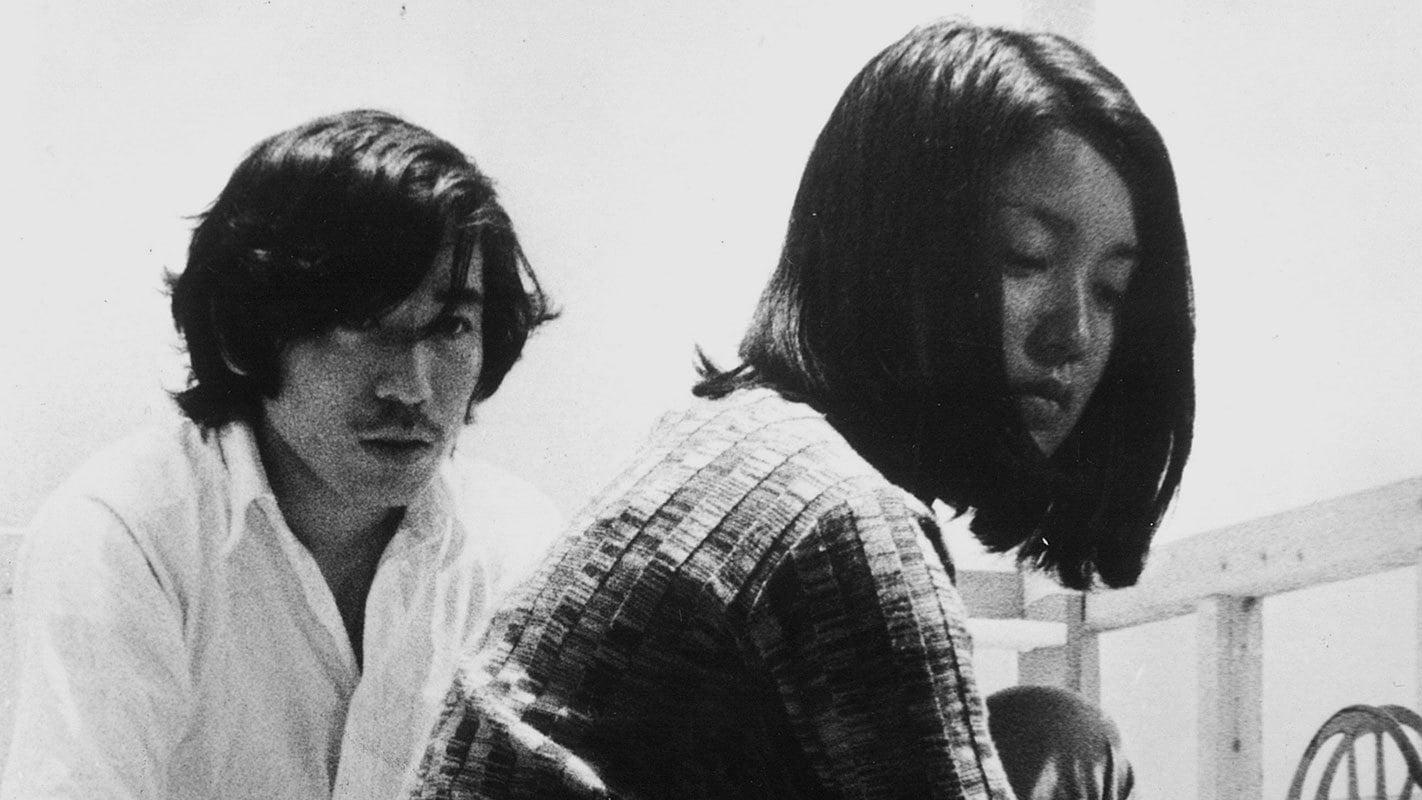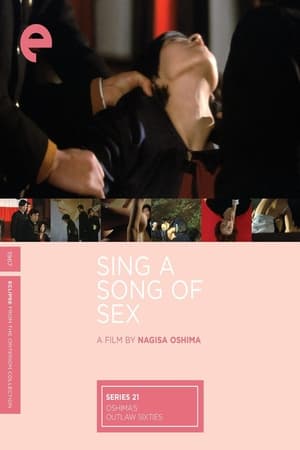Nagisa Oshima was a pioneering Japanese filmmaker known for his provocative and controversial works that challenged societal norms and conventions.
He rose to international prominence in the 1960s and 70s with films that explored themes of sexuality, violence, and political power, often through non-linear narratives and experimental techniques.
Here are some of Nagisa Oshima’s best films:
In the Realm of the Senses (1976): This film is Oshima’s most famous work, based on the true story of a passionate and obsessive love affair between a former prostitute and her employer in pre-World War II Japan.
The film is known for its explicit sexual content and was banned in several countries upon its release.
Merry Christmas Mr. Lawrence (1983): This film explores the relationship between a group of British prisoners of war and their Japanese captors during World War II.
It stars David Bowie and Tom Conti, and was a critical and commercial success.
Death by Hanging (1968): This film is a surreal and darkly comic exploration of the death penalty in Japan.
It follows the execution of a Korean man, who miraculously survives and questions the morality of capital punishment.
Boy (1969): This film tells the story of a young man who is sent to a reformatory after committing a violent crime.
It explores themes of adolescent rebellion and societal injustice, and is considered one of Oshima’s most politically charged films.
The Ceremony (1971): This film is a scathing critique of the traditional Japanese family and its role in perpetuating social and political inequality.
It follows the story of an aristocratic family preparing for a tea ceremony to commemorate their late father.
Best Nagisa Oshima Films
Nagisa Oshima’s films are characterized by their bold and challenging themes, unconventional storytelling techniques, and unflinching portrayal of the darker aspects of human nature.
1. Empire of Passion (1978)
“Empire of Passion” is a 1978 Japanese film directed by Nagisa Oshima. The film tells the story of a passionate love affair between a married woman and a young man, and the consequences that ensue from their actions.
The film is set in rural Japan in the late 19th century, and explores themes of love, lust, jealousy, and revenge.
The film is visually stunning, with Oshima’s use of color and composition creating a dreamlike, almost surreal atmosphere that adds to the sense of emotional intensity.
The film’s score, composed by Toru Takemitsu, is haunting and evocative, further adding to the film’s atmospheric quality.
“Empire of Passion” was controversial upon its release, due to its explicit sexual content and themes of adultery and murder.
However, it was also widely acclaimed, winning the Best Director award at the 1978 Cannes Film Festival.
If you like Nagisa Oshima’s work, on our sister site AuteurGraph we have a profile page, a visual film timeline, and a ratings page that gives a tonne of info and data about their career in a visualized form.
Overall, “Empire of Passion” is a masterful work of filmmaking that explores the darker aspects of human desire and the destructive power of love.
- Factory sealed DVD
- Tatsuya Fuji, Takuzo Kawatani, Akiko Koyama (Actors)
- English (Subtitle)
- English (Publication Language)
- Audience Rating: R (Restricted)
2. Death by Hanging (1968)
“Death by Hanging” is a Japanese film directed by Nagisa Oshima and released in 1968. The film is a satirical and politically charged exploration of Japanese society, focusing on the controversial issue of capital punishment.
The story follows the execution of a Korean man, R, who has been convicted of rape and murder. However, the execution fails due to a technicality, and R survives the hanging.
The prison officials then attempt to reenact the events leading up to the crime to prove R’s guilt, but their efforts are complicated by the fact that R has lost his memory.
As the officials struggle to find a way to execute R, the film explores themes of identity, memory, and power.
It also critiques the justice system and the death penalty, exposing the flaws and biases inherent in such institutions.
“Death by Hanging” is known for its experimental and unconventional style, combining elements of documentary, surrealism, and Brechtian theater.
The film’s bold political statements and unique cinematic language have made it a landmark of Japanese cinema and an influential work in the world of international art film.
- Kei Sato, Fumio Watanabe, Toshiro Ishido (Actors)
- Nagisa Oshima (Director)
- English (Subtitle)
- Audience Rating: NR (Not Rated)
3. The Ceremony (1971)


The Ceremony
1971 • 2h 3min • ★ 7/10 • Japan
Directed by: Nagisa Ōshima
Cast: Kenzō Kawarasaki, Atsuko Kaku, Atsuo Nakamura, Nobuko Otowa, Hōsei Komatsu
Oshima’s magisterial epic, centering on the ambivalent surviving heir of the Sakurada clan, uses ritual and the microcosm of the traditional family to trace the rise and fall of militaristic Japan across several decades.
“The Ceremony” is a novel by Japanese author and Nobel laureate, Yukio Mishima. It was first published in Japanese in 1970 under the title “Gogo no Eiko” (Afternoon of the Noble).
The novel was translated into English by Geoffrey W. Sargent and published in 1971.
“The Ceremony” is a complex and introspective novel that explores the decline of the aristocratic class in Japan and the psychological struggles of the protagonist, Isao Iinuma.
The story revolves around the preparations for a traditional tea ceremony, which is to be held in honor of the protagonist’s parents.
However, as the ceremony approaches, Isao becomes increasingly conflicted and begins to question the values and traditions of his family and society.
The novel is known for its complex and symbolic imagery, as well as its vivid descriptions of traditional Japanese customs and aesthetics.
Mishima’s writing is often noted for its exploration of themes such as honor, masculinity, and the relationship between the individual and society.
“The Ceremony” was the last novel published by Mishima before his death in 1970. His suicide, which was carried out in a dramatic and public manner, has added to the mystique surrounding the novel and the author’s life.
4. In the Realm of the Senses (1976)
“In the Realm of the Senses” is a Japanese erotic drama film directed by Nagisa Oshima and released in 1976.
The film is loosely based on the true story of Sada Abe, a former geisha who became notorious for her affair with and murder of her employer in 1936.
The film tells the story of Sada (played by Eiko Matsuda), a former prostitute who begins working as a maid in a hotel.
She soon meets and begins a passionate and obsessive affair with the hotel’s owner, Kichizo (Tatsuya Fuji), which becomes increasingly violent and dangerous.
As their sexual relationship intensifies, Sada and Kichizo become more and more isolated from the outside world, and their behavior becomes increasingly erratic and destructive.
The film features numerous explicit sex scenes and has been both praised for its exploration of sexual desire and criticized for its graphic content.
The film was controversial upon its release and was banned in several countries. It has since become a cult classic and is regarded as a landmark in Japanese cinema and in the history of erotic films.
- Tatsuya Fuji, Eiko Matsuda, Aoi Nakajima (Actors)
- Nagisa shima (Director) - Nagisa shima (Writer)
- English (Subtitle)
- Audience Rating: NC-17 (Adults Only)
5. Merry Christmas Mr. Lawrence (1983)
“Merry Christmas Mr. Lawrence” is a 1983 British-Japanese war film directed by Nagisa Oshima and starring David Bowie, Tom Conti, Ryuichi Sakamoto, and Takeshi Kitano.
While it was not directed by Kon Ichikawa, it is still a notable film with an impressive cast.
The film is set in a Japanese prisoner-of-war camp during World War II and explores the relationships between the prisoners and their Japanese captors.
Bowie plays a British officer who struggles to adapt to the camp’s strict rules and clashes with the camp’s commandant, played by Sakamoto.
Conti plays another British officer who tries to keep the peace between the prisoners and the Japanese guards.
The film was praised for its performances, particularly those of Bowie and Sakamoto, as well as its haunting score, which was also composed by Sakamoto.
It was also noted for its portrayal of the complex and often contradictory relationships between the prisoners and their captors, and for its exploration of themes such as loyalty, honor, and sacrifice.
Overall, “Merry Christmas Mr. Lawrence” is a powerful and thought-provoking film that offers a unique perspective on the experiences of prisoners of war during World War II.
- Amazon Prime Video (Video on Demand)
- David Bowie, Tom Conti, Ryuichi Sakamoto (Actors)
- Nagisa Oshima (Director) - Nagisa Ôshima (Writer) - Terry Glinwood (Producer)
- English (Playback Language)
- English (Subtitle)
6. Taboo (1999)
Taboo (1999) is a film directed by Nagisa Oshima that explores themes of sexuality, power, and taboo in feudal Japan. The film is set in the 1860s, during the end of the Edo period, and tells the story of a wealthy samurai, Sozaburo Kano, who is exiled to a remote village after having an affair with his adopted son.
In the village, he becomes involved in a complex web of relationships with the local inhabitants, including a young widow, a former prostitute, and a group of rebel samurai.
The film is known for its exploration of taboo topics such as homosexuality, incest, and sadomasochism, and its explicit depictions of sexual acts.
Oshima uses a non-linear narrative structure and employs various storytelling techniques, including flashbacks and dream sequences, to create a dreamlike atmosphere and emphasize the fluidity of sexual desire and power dynamics.
Taboo was Oshima’s final film, and is considered by many to be a reflection on his own life and career.
The film received critical acclaim for its daring subject matter and innovative storytelling, and is regarded as one of Oshima’s most significant works.
7. The Man Who Put His Will on Film (1970)


The Man Who Left His Will on Film
1970 • 1h 34min • ★ 5.9/10 • Japan
Directed by: Nagisa Ōshima
Cast: Tomoyo Ōshima, Naomi Shiraishi, Kenji Shiiya, Kiyoko Tsuji, Kazuo Goto
When a man chases down his stolen movie camera, the thief commits suicide by jumping off a building. But after the police take the camera as evidence, it becomes unclear if there was ever a thief in the first place.
“The Man Who Put His Will on Film” is a 1970 Japanese film directed by Nagisa Oshima. The film is a highly experimental work that blurs the lines between reality and fiction, and challenges the conventions of traditional storytelling.
The film tells the story of a director who is making a film about his own life, but as the filming progresses, his control over the project begins to slip away.
The director becomes increasingly obsessed with the idea of capturing his own death on film, leading to a surreal and sometimes disturbing exploration of the nature of filmmaking and the relationship between art and reality.
Visually, the film is highly stylized, with Oshima utilizing a variety of experimental techniques such as split screens, jump cuts, and handheld camera work to create a sense of disorientation and unease.
The film’s score, composed by Hikaru Hayashi, adds to the film’s unsettling atmosphere.
“The Man Who Put His Will on Film” is a challenging and provocative work of cinema that pushes the boundaries of what a film can be.
It is a must-see for anyone interested in experimental filmmaking or the work of Nagisa Oshima.
8. Sing a Song of Sex (1967)


Sing a Song of Sex
Youth Is Wasted On The Young.
1967 • 1h 43min • ★ 5.5/10 • Japan
Directed by: Nagisa Ōshima
Cast: Ichiro Araki, Jūzō Itami, Kōji Iwabuchi, Akiko Koyama, Kazuyoshi Kushida
Four sexually hungry high school students preparing for their university entrance exams meet up with an inebriated teacher singing bawdy drinking songs. This encounter sets them on a less than academic path.
“Sing a Song of Sex” is a Japanese film directed by Nagisa Oshima and released in 1967. The film is a satirical and provocative exploration of the sexual politics and cultural conflicts of 1960s Japan.
The story follows a group of five students who rent a house together in Tokyo. The group consists of three men and two women, and they engage in various sexual activities with each other and with outside partners.
As the students navigate their desires and conflicts, the film offers a critical commentary on Japanese society, including its traditional gender roles, class divides, and political tensions.
“Sing a Song of Sex” is known for its daring and controversial portrayal of sexuality, which was considered highly provocative and taboo-breaking at the time of its release.
The film also features innovative visual techniques and storytelling devices, such as freeze frames, jump cuts, and voice-over narration, which contribute to its experimental and modernist style.
Overall, “Sing a Song of Sex” is a key work in the oeuvre of Nagisa Oshima, who was a major figure in the Japanese New Wave of the 1960s and 1970s.
The film remains relevant and impactful today for its incisive critique of power and sexuality, as well as its bold artistic vision.
9. Violence at Noon (1966)
“Violence at Noon” is a 1966 Japanese film directed by Nagisa Oshima. The film is often considered a masterpiece of the Japanese New Wave, a movement that emerged in the 1960s and aimed to challenge traditional Japanese cinema and social norms.
The film follows a series of violent crimes committed by a group of three women who target and kill men.
The women are led by a former psychiatric patient named Eisuke, who is haunted by memories of his traumatic past.
As the police investigate the crimes, the film delves into the psychological and social issues that underlie the violence.
https://www.youtube.com/watch?v=MIkhTaJOpNg
“Violence at Noon” is known for its experimental narrative structure, which blends flashbacks, dream sequences, and documentary-style footage.
The film also features striking cinematography and editing, which reflect Oshima’s interest in creating a dynamic and challenging visual language.
The film was controversial upon its release, due to its graphic depictions of violence and its unflinching critique of Japanese society.
However, it has since been recognized as a groundbreaking work of cinema and an important contribution to the Japanese New Wave.
- J B0 (40x58)
- Unframed
- Folded
- Please note sizes are approximate and stated in inches. The actual size can vary by an inch or more....
- We are always happy to provide a detailed condition report as well as additional images of the item...
10. The Pleasures of the Flesh (1965)
“The Pleasures of the Flesh” (also known as “Etsuraku” in Japanese) is a Japanese drama film directed by Nagisa Oshima and released in 1965.
The film explores themes of desire, lust, and power through the story of a young man named Katsuo (played by Katsuo Nakamura), who becomes involved in a criminal underworld in Tokyo.
Katsuo is a poor student who struggles to make ends meet, and he becomes involved in petty theft and scams to survive.
He soon meets a beautiful young woman named Ayako (played by Mariko Kaga) and becomes infatuated with her.
However, he also becomes entangled in a dangerous and violent world of organized crime, and his desires and ambitions ultimately lead him down a path of self-destruction.
The film is notable for its explicit depiction of sexuality and violence, and its frank portrayal of the criminal underworld in post-war Japan.
It was controversial upon its release and was banned in some countries, but has since been regarded as a classic of Japanese cinema and a landmark in the career of Nagisa Oshima.
- Feldman, Leticia Gossdenovich (Author)
- English (Publication Language)
- 440 Pages - 11/28/2005 (Publication Date) - Xlibris, Corp. (Publisher)
11. Japanese Summer: Double Suicide (1967)
“Japanese Summer: Double Suicide” (also known as “Double Suicide”) is a 1967 Japanese drama film directed by Masahiro Shinoda, and it is not directed by Kon Ichikawa.
The film is based on a play by Monzaemon Chikamatsu, a famous Japanese playwright of the Edo period, and tells the story of a married paper merchant who falls in love with a courtesan and decides to commit double suicide with her.
The film explores the complex relationships between the characters and the societal pressures that drive them to make their fateful decision.
The paper merchant’s wife, for instance, is torn between her duty to her husband and her love for him, while the courtesan is forced to choose between her desire for the paper merchant and her duty to her profession.
The film is notable for its innovative use of color and sound, which create a dreamlike and surreal atmosphere that contrasts with the grim reality of the characters’ situation.
It also features strong performances from its cast, particularly from the two leads, Kichiemon Nakamura and Shima Iwashita.
“Japanese Summer: Double Suicide” is considered a classic of Japanese cinema and has been praised for its poetic and melancholic tone, its exploration of the themes of love, duty, and honor, and its inventive visual style.
12. Three Resurrected Drunkards (1968)
Three Resurrected Drunkards (1968) is a satirical film directed by Nagisa Oshima that explores themes of identity, nationality, and cultural imperialism.
The film tells the story of three young Japanese men who are mistaken for Korean illegal immigrants by a group of authorities on a beach in western Japan.
The men are forcibly taken to a police station where they are made to undergo a “re-education” process to become more “Japanese.” However, the men escape from the police and are forced to navigate a society that rejects their true identities.
The film uses various experimental techniques, including fragmented narratives, surreal imagery, and fourth-wall breaking, to subvert traditional narrative structures and highlight the absurdity of the situation.
Oshima uses the characters’ physical transformation to draw attention to the arbitrary nature of racial and national identities and the role of the state in enforcing these categories.
Three Resurrected Drunkards is considered one of Oshima’s most politically charged and provocative works, and was highly controversial upon its release.
The film was banned in Japan for several years due to its critique of the government and the authorities.
However, it has since been recognized as a significant contribution to the Japanese New Wave movement and a powerful critique of Japanese nationalism and cultural imperialism.
3 Characteristics of Nagisa Oshima Films
Nagisa Oshima was a highly influential Japanese filmmaker who was known for his innovative approach to cinema. Here are three characteristics that are often present in his films:
Provocative and controversial themes: Oshima’s films often dealt with taboo subjects such as sexuality, violence, and political unrest.
He was known for pushing the boundaries of what was considered acceptable in cinema, and his work was often met with controversy and censorship.
Experimentation with form and style: Oshima was a highly innovative filmmaker who was not afraid to experiment with the form and style of his films. He often used unconventional techniques such as jump cuts, handheld camera work, and non-linear storytelling to create a sense of disorientation and unease.
Political and social commentary: Oshima’s films were often critiques of Japanese society and culture.
He used his work to comment on issues such as class inequality, political corruption, and the effects of World War II on Japanese society. His films were often highly political and sought to provoke thought and discussion about these issues.
3 Reasons Why You Should Watch Nagisa Oshima Films
Nagisa Oshima was a renowned Japanese filmmaker who is considered a major figure in world cinema, particularly in the Japanese New Wave of the 1960s and 1970s. Here are three reasons why you should watch his films:
Social Critique and Political Commentary: Oshima’s films are known for their incisive critique of Japanese society, particularly in its rigid class structures, political tensions, and sexual politics.
His films address issues such as capital punishment, racism, gender inequality, and political corruption.
They offer a frank and often controversial portrayal of these themes, making them essential viewing for anyone interested in social criticism and political commentary.
Innovative and Experimental Style: Oshima’s films are characterized by their innovative and experimental style.
He was known for his use of bold visual techniques and storytelling devices, such as freeze frames, jump cuts, and voice-over narration, which challenged conventional film language and broke new ground in cinematic expression.
His films are often described as avant-garde, and they continue to inspire and influence filmmakers today.
Humanistic and Philosophical Themes: While Oshima’s films are often politically charged, they also contain deep humanistic and philosophical themes.
He explores questions of identity, memory, desire, and morality, creating complex and multifaceted characters who challenge traditional notions of heroism and villainy.
His films offer a nuanced and thought-provoking vision of the human condition, making them essential viewing for anyone interested in the complexities of the human experience.
Overall, Nagisa Oshima’s films are essential viewing for anyone interested in cinema, social critique, political commentary, and innovative storytelling.
They offer a unique and impactful perspective on the world and the human experience, making them timeless and relevant works of art.
Best Nagisa Oshima Films – Wrapping Up
Nagisa Oshima was a highly influential Japanese filmmaker who was known for his daring and unconventional approach to cinema. Some of his best films include:
In the Realm of the Senses (1976) – a highly controversial film based on the true story of a love affair that ends in tragedy.
Merry Christmas Mr. Lawrence (1983) – a drama set in a Japanese prisoner of war camp during World War II, which explores themes of cultural conflict and understanding.
Cruel Story of Youth (1960) – a film about two teenagers who rebel against societal norms and become involved in a dangerous relationship.
Boy (1969) – a film that explores the psyche of a young boy who is ostracized by his family and community.
Violence at Noon (1966) – a film about a series of violent crimes committed by a group of women, which delves into the psychological and social issues that underlie the violence.
Each of these films reflects Oshima’s unique vision and his willingness to challenge conventions and push boundaries in his filmmaking.


![Empire of Passion (The Criterion Collection) [DVD]](https://m.media-amazon.com/images/I/41uJpE7cg-L.jpg)

![Death by Hanging (The Criterion Collection) [Blu-ray]](https://m.media-amazon.com/images/I/51tvg6yqYmL.jpg)

![In the Realm of the Senses [DVD]](https://m.media-amazon.com/images/I/51AHEXd1JXL.jpg)






![Japanese Movie - Double Suicide: Japanese Summer [Japan DVD] DA-5928](https://m.media-amazon.com/images/I/51ypvWjX8DL.jpg)
![Japanese Movie - Three Resurrected Drunkards [Japan DVD] DA-5929](https://m.media-amazon.com/images/I/51OlUBoRI5L.jpg)
